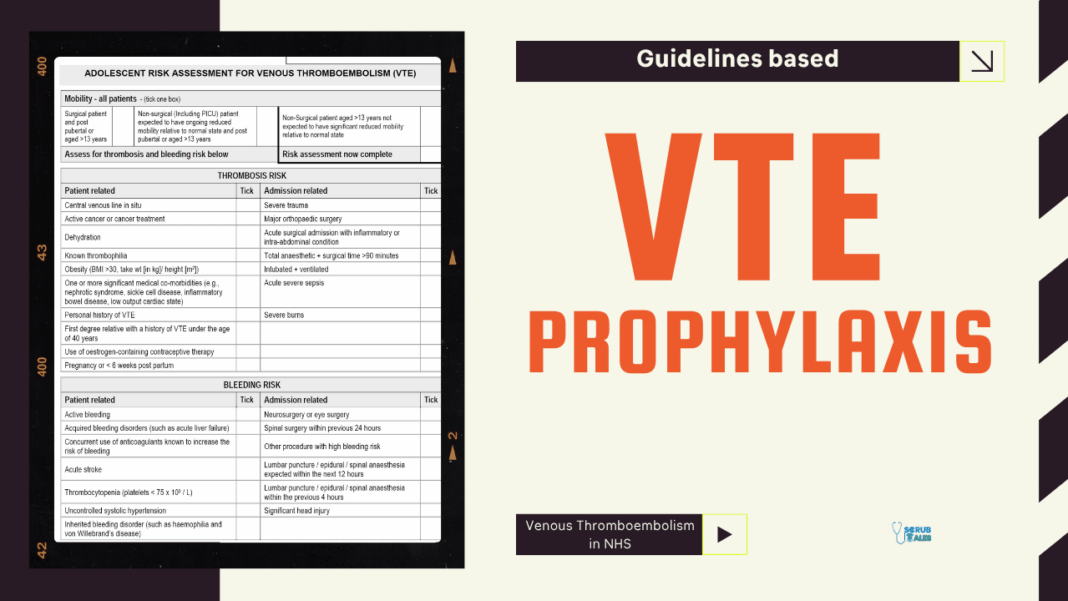Interpreting arterial blood gas results can feel overwhelming at first, but it doesn’t have to be. Whether you’re a junior doctor, IMG, or final-year medical student, mastering ABG interpretation is a skill that will serve you across A&E, wards, and ICU.
If you have ever looked at an arterial blood gas (ABG) and thought, “What am I looking at?” — you’re not alone.
Whether you’re on the wards, in A&E, or reviewing bloods in a critical care setting, understanding acid-base balance is crucial for managing patients who are deteriorating.

Let’s break it down together — simple, high-yield, and (maybe) even fun.
What Is an ABG (Arterial Blood Gas) and Why Does It Matter
Your body constantly balances acids and bases to maintain a stable pH level in your blood.
- 7.35 to 7.45= Normal blood pH
- If it goes above 7.45 → Alkalosis
- If it drops below 7.35 → Acidosis
Normal ABG Values (UK Reference Ranges)
| Test | Normal Range | Role in pH Balance |
|---|---|---|
| pH | 7.35 – 7.45 | Acidity vs alkalinity |
| PaCO₂ | 4.7 – 6.0 kPa | Controlled by the lungs (acid) |
| HCO₃⁻ | 22 – 26 mmol/L | Controlled by the kidneys (base) |
Tip: CO₂ acts as an acid. Bicarbonate (HCO₃⁻) acts as a base. This relationship forms the foundation of interpreting arterial blood gas results accurately.
The 4 Main Acid-Base Disorders in ABG Interpretation
| Type | pH | CO₂ | HCO₃⁻ | Root Cause |
|---|---|---|---|---|
| Respiratory Acidosis | ↓ < 7.35 | ↑ > 6.0 kPa | Normal or ↑ | Lungs can’t blow off CO₂ |
| Respiratory Alkalosis | ↑ > 7.45 | ↓ < 4.7 kPa | Normal or ↓ | Blowing off too much CO₂ |
| Metabolic Acidosis | ↓ < 7.35 | Normal or ↓ | ↓ < 22 | Too much acid / lost base |
| Metabolic Alkalosis | ↑ > 7.45 | Normal or ↑ | ↑ > 26 | Too much base / lost acid |
Respiratory Causes of ABG Changes
Respiratory Acidosis – CO₂ is stuck
“My lungs aren’t clearing the trash.”
What’s going on: Your lungs aren’t getting rid of CO₂, so acid builds up.
Common Causes:
- COPD (classic!)
- Opioid overdose (respiratory depression)
- Severe asthma or airway block
- Neuromuscular weakness (e.g. myasthenia gravis)
ABG Pattern:
- pH ↓
- CO₂ ↑
- HCO₃⁻ normal (early) or ↑ (chronic compensation)
Think: CO₂ builds up = acid goes up = pH goes down
This is a classic ABG pattern seen in conditions like COPD and opioid toxicity — key for early recognition of ventilatory failure.
Respiratory Alkalosis – CO₂ is flying out
“I’m breathing too fast, and blowing off all my acid.”
What’s going on: You’re hyperventilating, losing CO₂ faster than you should.
Common Causes:
- Anxiety/panic attacks
- Early pulmonary embolism (PE)
- Fever, pain, pregnancy
- High altitudes
ABG Pattern:
- pH ↑
- CO₂ ↓
- HCO₃⁻ normal or ↓ (compensation)
Clinically? You’ll often see this in anxious patients or anyone hyperventilating.
Metabolic Causes of ABG Changes
Metabolic Acidosis – Acid overload or base loss
“Either I made too much acid, or lost too much base.”
Common Causes:
- DKA (diabetic ketoacidosis)
- Lactic acidosis (sepsis, shock)
- Renal failure (can’t excrete acid)
- Diarrhoea (losing bicarb from the gut)
Mnemonic: MUDPILES (High Anion Gap Metabolic Acidosis)
M – Methanol
U – Uraemia (chronic kidney failure)
D – Diabetic ketoacidosis
P – Paraldehyde
I – Iron, Isoniazid
L – Lactic acidosis
E – Ethylene glycol
S – Salicylates
ABG Pattern:
- pH ↓
- HCO₃⁻ ↓
- CO₂ = normal or ↓ (lungs try to compensate by hyperventilating)
This is more common in ITUs, and critical clinical conditions such as sepsis and DKA should be excluded.
Metabolic Alkalosis – Base overload or acid loss
“I’ve either been vomiting or popping too many antacids.”
Common Causes:
- Vomiting (loss of HCl)
- Diuretic use
- Antacid overuse
- Hypokalemia
ABG Pattern:
- pH ↑
- HCO₃⁻ ↑
- CO₂ = normal or ↑ (compensation via hypoventilation)
Pro tip: If a patient is vomiting a lot and has a high pH, this is it.
Step-by-Step ABG Interpretation Made Easy
Now that you’ve seen the building blocks, let’s apply them in a practical framework to make ABG interpretation less daunting.
Look at the pH
- < 7.35 = acidosis
- 7.45 = alkalosis
Check PaCO₂ and HCO₃⁻
- Which one matches the pH? That’s the primary issue.
Check the other value
- If it’s moving in the opposite direction, the body is trying to compensate.
ROME Mnemonic for ABG Interpretation
Respiratory = Opposite
Metabolic = Equal
| Disorder | pH | CO₂ or HCO₃⁻ |
|---|---|---|
| Respiratory Acidosis | ↓ | ↑ CO₂ |
| Respiratory Alkalosis | ↑ | ↓ CO₂ |
| Metabolic Acidosis | ↓ | ↓ HCO₃⁻ |
| Metabolic Alkalosis | ↑ | ↑ HCO₃⁻ |
Quick Tip: If both values are moving in the same direction, think metabolic. If they’re moving in opposite directions, it’s probably respiratory.
ABG Practice Examples (UK format)
Example 1
- pH = 7.28
- PaCO₂ = 6.9 kPa
- HCO₃⁻ = 24 mmol/L
Diagnosis: Respiratory Acidosis
pH is low + CO₂ is high = problem is respiratory (lungs retaining CO₂)
Example 2
- pH = 7.49
- PaCO₂ = 4.0 kPa
- HCO₃⁻ = 24 mmol/L
Diagnosis: Respiratory Alkalosis
pH is high + CO₂ is low = hyperventilation picture
Example 3
- pH = 7.30
- PaCO₂ = 4.0 kPa
- HCO₃⁻ = 16 mmol/L
Diagnosis: Metabolic Acidosis with Respiratory Compensation
Bicarbonate is low = metabolic issue
CO₂ is also low = lungs compensating by blowing off CO₂
Example 4
- pH = 7.48
- PaCO₂ = 6.4 kPa
- HCO₃⁻ = 30 mmol/L
Diagnosis: Metabolic Alkalosis with Respiratory Compensation
Bicarb is high = metabolic cause
CO₂ is slightly high = lungs are trying to hold onto acid (hypoventilation)
ABG Cheat Sheet: Summary Table of Disorders
| Disorder | pH | PaCO₂ | HCO₃⁻ | Common Causes |
|---|---|---|---|---|
| Respiratory Acidosis | ↓ | ↑ | Normal or ↑ | COPD, opioids, asthma, neuro diseases |
| Respiratory Alkalosis | ↑ | ↓ | Normal or ↓ | Anxiety, pain, PE, pregnancy |
| Metabolic Acidosis | ↓ | ↓ (compensated) | ↓ | DKA, sepsis, renal failure, diarrhoea |
| Metabolic Alkalosis | ↑ | ↑ (compensated) | ↑ | Vomiting, diuretics, antacids, low K⁺ |
Final Tips on ABG Interpretation
If you’ve made it this far, you now officially know more about acid-base balance than most people on the ward at 3 AM. Whether you’re a med student, nurse, or junior doc on call, this stuff will start clicking.
Remember:
- Always start with pH
- Use CO₂ and HCO₃⁻ to figure out the type
- Look for compensation — the body always tries to fix itself
Whether you’re preparing for an OSCE, on-call shift, or just trying to make sense of acid-base balance, ABG interpretation gets easier with repetition. Save this post, use it during ward rounds, and share it with peers who need a solid ABG primer.

Frequently Asked Questions
Which is worse – acidosis or alkalosis?
Both can be dangerous, but alkalosis may be more disruptive to cellular function and electrolytes. The severity depends on the cause and how quickly it develops.
Why is alkalosis sometimes considered worse?
Alkalosis can lead to hypokalemia, seizures, and cardiac arrhythmias. It impairs oxygen delivery to tissues.
How do I know if it’s metabolic acidosis or alkalosis?
Look at the bicarbonate (HCO₃⁻):
↓ HCO₃⁻ = Metabolic acidosis
↑ HCO₃⁻ = Metabolic alkalosis
How do I determine if it’s acidosis or alkalosis?
Start with the pH:
< 7.35 = acidosis
> 7.45 = alkalosis
Any tricks to remember respiratory vs metabolic?
Yes — use ROME:
Respiratory = Opposite (pH and CO₂ move in opposite directions)
Metabolic = Equal (pH and HCO₃⁻ move in same direction)
What are the signs of acidosis vs alkalosis?
Acidosis: Confusion, fatigue, hyperkalemia
Alkalosis: Muscle cramps, paresthesias, hypokalemia
Which is more dangerous long-term?
Depends on the cause, but uncompensated alkalosis can have serious neurological and cardiac effects.


